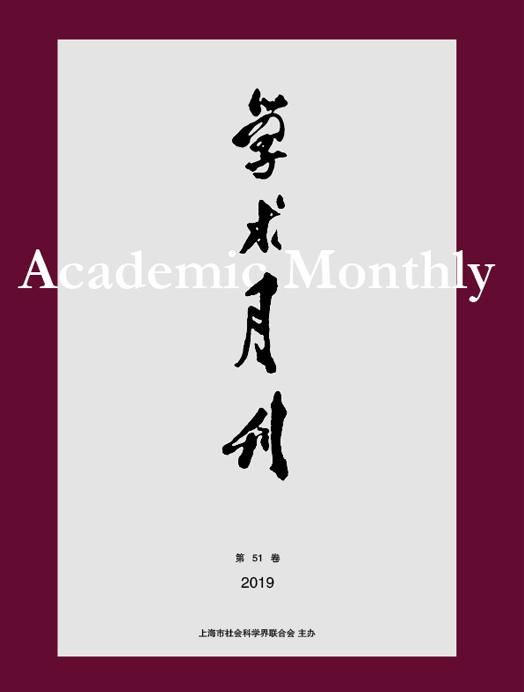Citation:
Chengji LIU. The Aesthetics of Rites-Music and Traditional China[J]. Academic Monthly, 2021, 53(6): 171-182.

The Aesthetics of Rites-Music and Traditional China
-
Abstract
Chinese history has been characterized by many concepts in modern historical research. But none serves more influential in shaping Chinese history as rites-music (“礼乐”). It can define the nature of Chinese civilization, culture, politics and institution, correspondingly, each of which can be entitled as a rites-music one. However, rites-music was preliminarily and essentially based on traditional aesthetics and arts. Rites (“礼”) mainly refers to the elegance of the behavior, ceremonial art and fine arts of rites, and music (“乐”) refers to verse, music and dance. Thus, rites-music is the synthesis of these aesthetics and the art manifestations. This background reveals the value of the aesthetics to the traditional China. In this sense, the aesthetic tradition characterized as rites-music is the most fundamental tradition, and the rites-music spirit aimed at grace both in language and social behaviors constitutes the soul of the national spirit. Hence, setting up the rites-music aesthetics will contribute to declare the core position of the aesthetics in Chinese humane history, and facilitate the research of Chinese aesthetics history equate to the national history while it quitting the conventional pattern.
-

-
References
-
Access
-
-
[1]
Bo XU
. Perfect Teaching: The Paradigmatic Transformation and Its Significance of Mou Zongsan Philosophy. Academic Monthly,
2022, 54(9): 26-34.
-
[2]
CHU Xiaobai
. . Academic Monthly,
2018, 50(6): 89-103.
-
[3]
. . Academic Monthly,
2016, 48(03): 157-164.
-
[4]
. . Academic Monthly,
2016, 48(04): 178-185.
-
[5]
NING Zhenjiang
. . Academic Monthly,
2018, 50(6): 121-132.
-
[6]
. . Academic Monthly,
2017, 49(10): 9-12.
-
[7]
Lu LU
. On Jiangzhou Poetry in the Six Dynasties. Academic Monthly,
2020, 52(5): 138-152.
-
[8]
Zongqi CAI
. The Syntax and Poetic Vision of Tang Pentasyllabic Regulated Verse. Academic Monthly,
2019, 51(1): 115-134.
-
[9]
Lifeng MO
. The Close-and-Distant Relationship between Lu You and Tao Yuanming’ Poems. Academic Monthly,
2021, 53(5): 146-153.
-
[10]
Zhe JIANG
. “Exploring Meaning by Scripture” and “Sola Scriptura”. Academic Monthly,
2022, 54(2): 158-175.
-
[11]
Xiaobai CHU
. An Intertextual Research on “Dingyou Dream”. Academic Monthly,
2019, 51(7): 113-127.
-
[12]
. Where Will Aesthetics Go: Thomas Munro’s Way of Cross-civilization Comparative Aesthetics. Academic Monthly,
2018, 50(04): 108-117.
-
[13]
Pingyuan CHEN
. Politics and Aesthetics of Voice. Academic Monthly,
2022, 54(1): 146-166.
-
[14]
XU Ming
. Aesthetics and Cognitive Science. Academic Monthly,
2023, 55(8): 145-165.
-
[15]
Xiangzhan CHENG
. The Theory of Aesthetic Appreciation: The Unique Aesthetic Conception of Environmental Aesthetics and Its Promotion of Aesthetic Principles. Academic Monthly,
2021, 53(2): 151-159.
-
[16]
Rong LI
. Roland Barthes and the Language Practice of “the Third Generation Poetry”. Academic Monthly,
2020, 52(10): 130-140.
-
[17]
Nengzhi LI
, Dingguang LI
. On the “Mistakes” in Quoting and Discussing Poems in Dream of the Red Chamber. Academic Monthly,
2021, 53(10): 173-181.
-
[18]
,
. . Academic Monthly,
2017, 49(01): 179-184.
-
[19]
Jianping GAO
. The Revival of Aesthetics at the Turn of the Century. Academic Monthly,
2020, 52(6): 111-121, 134.
-
[20]
Yanping GAO
. Herder on Touching: Aesthetics of “Dunkelheit” (Darkness). Academic Monthly,
2018, 50(10): 130-139.
-
-



 沪公网安备 31010102003103号
沪公网安备 31010102003103号 DownLoad:
DownLoad: